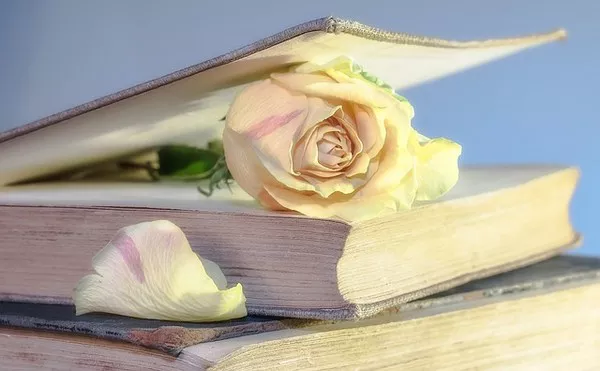Nature’s splendor often captivates us with its breathtaking beauty, and flowers, in particular, have a way of enchanting our senses. Their vibrant colors, delicate petals, and alluring fragrance can leave a lasting impression. Preserving these ephemeral treasures can be a cherished way to immortalize the memories associated with them. Pressing flowers in a book is a simple and time-honored technique that allows us to conserve the essence of these blooms, creating stunning keepsakes and artworks. In this comprehensive guide, we will delve into the art of pressing flowers, exploring the methods, best practices, and creative uses for your pressed botanical collection.
The Art of Pressing Flowers
Pressing flowers in a book is an ancient technique that dates back centuries. This traditional method involves flattening fresh flowers to remove moisture and preserve their natural form. It’s a simple process that requires only a few materials and a little patience. The beauty of this method lies in its accessibility – anyone can master the art of pressing flowers.
Materials Required
1.Fresh flowers: Choose blooms that are at their peak, free from any damage or blemishes. The best time to pick flowers for pressing is in the morning when they are well-hydrated.
2. A heavy book: Select a large, heavy book with smooth, absorbent pages. Old phone books, dictionaries, or even specially designed flower presses can be used.
3. Parchment or wax paper: These sheets will protect the pages of the book from moisture and prevent flowers from sticking to them.
4. Absorbent paper: Blotting paper or coffee filters work well for absorbing excess moisture from the flowers.
5. Weights: You may need additional weights to place on top of the book to provide consistent pressure.
Step-by-Step Process
1. Preparation:
Start by gathering your materials and preparing the flowers for pressing. Trim the stems to your desired length, but avoid cutting too close to the flower head, as this can cause the petals to fall off during pressing.
2. Selecting the Book:
Open the book and place a layer of parchment or wax paper on one of the pages. This will serve as a protective barrier for the flowers and prevent ink or moisture from transferring onto them.
3. Arranging the Flowers:
Lay the flowers on the parchment paper, ensuring they do not overlap. Give each flower enough space to retain its shape during pressing. You can experiment with various arrangements to create visually appealing compositions.
4. Pressing:
Once the flowers are arranged, close the book gently, sandwiching the flowers between the pages. If needed, you can place additional sheets of parchment or wax paper between other pages to press multiple batches simultaneously. Add weights on top of the closed book to apply pressure evenly.
Drying Period:
The pressing process can take anywhere from one to three weeks, depending on the thickness and moisture content of the flowers. Check the flowers periodically, and replace the absorbent paper if it becomes saturated.
Final Touches:
Once the flowers are fully dried and pressed, carefully remove them from the book. Use tweezers or a delicate touch to avoid damaging the delicate petals. You can now use your pressed flowers for various creative projects.
Best Practices
Timing Matters: Press flowers as soon as possible after picking them. Fresh blooms have a higher water content, which can lead to better results.
1.Proper Handling: Treat the flowers gently during the pressing process to preserve their natural shape and color. Avoid touching the petals with your fingers, as the natural oils can leave marks on the flowers.
2. Suitable Flowers: While almost any flower can be pressed, some species yield better results than others. Flowers with flatter blooms, like pansies, daisies, and violets, are ideal for pressing. Experiment with different flowers to discover the ones that press best.
3. Balanced Weight: Ensure that you apply consistent pressure while pressing the flowers. If using a heavy book, you may need to add additional weights on top of the book to achieve even pressure distribution.
4. Patience is Key: The pressing process requires patience. Rushing can result in subpar results, with flowers retaining moisture or becoming discolored.
Creative Uses for Pressed Flowers
Once you have successfully pressed your flowers, the possibilities for creative expression are endless. Here are some inspiring ideas to make the most of your pressed botanical collection:
1.Framed Artwork: Create stunning floral arrangements by arranging pressed flowers on a blank canvas or cardstock. Frame the artwork and display it as a beautiful wall decoration.
2. Greeting Cards: Personalize your greeting cards by embellishing them with pressed flowers. Glue the pressed blooms onto the front of the card for a delightful touch.
3. Bookmarks: Laminate pressed flowers between two sheets of clear adhesive paper to make elegant and nature-inspired bookmarks.
4. Resin Crafts: Embed pressed flowers in resin to make jewelry pieces like pendants or earrings, or even unique paperweights.
5. Decorative Candles: Pressed flowers can be gently adhered to the outside of candles to create charming, decorative pieces.
6. Herbarium: Create a personal herbarium by carefully mounting pressed flowers on archival paper and labeling them with their scientific names and collection details.
7. Scrapbooking: Add a touch of nature to your scrapbooking projects by incorporating pressed flowers alongside photos and memories.
Conclusion
Pressing flowers in a book is a delightful and meditative activity that allows us to capture the beauty of nature and preserve it for years to come. With a few simple materials and a bit of patience, you can create stunning works of art and cherished keepsakes. This time-honored tradition connects us to nature and reminds us of the fleeting yet exquisite beauty of flowers. So, the next time you come across a beautiful bloom, consider pressing it in a book and letting its natural charm bloom forever. Happy pressing!


